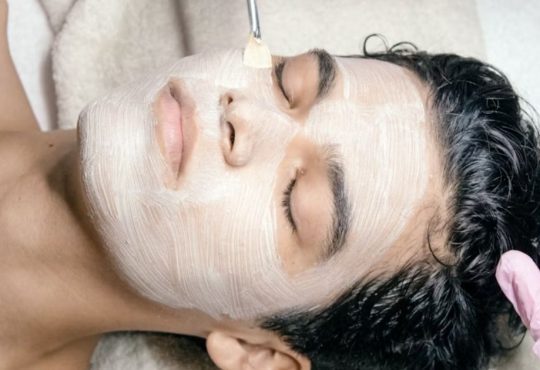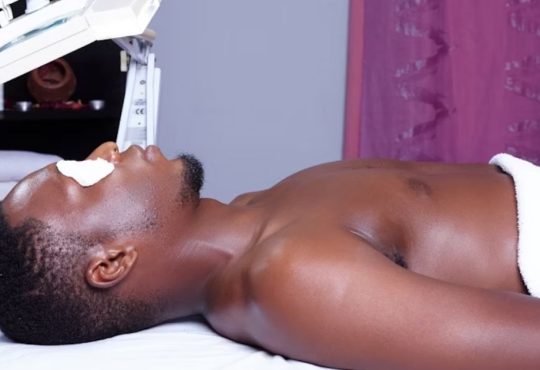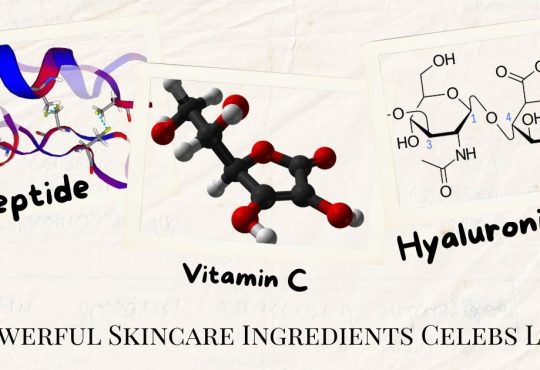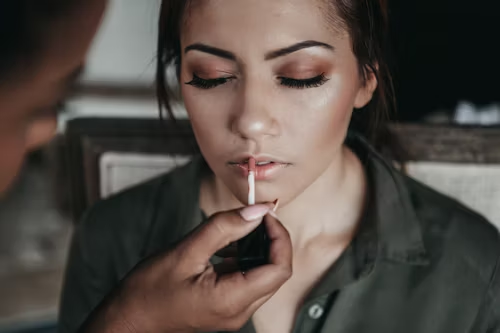
Applying makeup is one of the most significant concerns for those with acne-prone skin. It’s not the makeup itself that’s feared, but rather the potential impact it could have on the skin. Heavy makeup or products containing harsh chemicals can disrupt the skin’s balance. Moreover, several factors can trigger breakouts or irritate sensitive skin if not adequately addressed. To assist you in overcoming these challenges, we’ve compiled a list of easy Acne Breakout Makeup Tips for applying makeup on acne-prone skin. Continue reading to discover five simple yet effective strategies and four correct techniques to achieve balance.
Acne Breakout Makeup Tips: 9 Best Advice for Acne-Prone Skin!
Embrace Primer as Your Best Friend
Building a solid foundation for your makeup routine begins with primer, especially when dealing with acne-prone skin. Primer serves as a crucial preparatory step, extending the wear-time of your makeup and providing a smooth canvas by minimizing the appearance of pores. When selecting a primer, prioritize those with mattifying properties to control excess shine and keep your skin looking fresh throughout the day. Additionally, consider choosing a primer infused with skin-loving ingredients such as niacinamide or hyaluronic acid to provide hydration and nourishment while creating a flawless base for your makeup application.
Avoid Oil-Based, Heavy Foundation
Selecting the appropriate foundation is crucial when dealing with acne-prone skin. Opt for a lightweight, matte foundation that is free from oils. Look for formulas that offer medium to high coverage and blend seamlessly into the skin. Additionally, prioritize foundations that include SPF protection to provide a natural-looking matte finish while safeguarding your skin against sun damage. These oil-free foundations offer coverage and ensure your skin remains comfortable and breathable throughout the day.
Prioritize Hygiene with Your Makeup Tools
Ensuring the cleanliness of your makeup brushes and sponges is paramount, especially when dealing with acne-prone skin. Pay attention to the importance of maintaining hygiene in your beauty routine. Avoid sharing your makeup brushes with others, as cross-contamination can lead to potential skin issues. Additionally, avoid using dirty sponges or brushes on your skin, as they can harbour bacteria and contribute to irritation and breakouts.
Regularly cleaning your makeup tools is essential for preventing bacteria buildup and ensuring longevity in skincare efforts. After each use, thoroughly cleanse your brushes and sponges using a gentle brush cleaner or mild soap. Rinse them well and let them air dry completely before storing them. By practising good hygiene habits with your makeup tools, you can maintain the health and clarity of your skin, ensuring a flawless makeup application every time.
Enhance Your Makeup Arsenal with a Color Corrector
Acne can often leave behind unsightly redness, scars, and uneven skin tone, making achieving flawless makeup look challenging. Fortunately, colour correctors offer a targeted solution to address these specific concerns. By incorporating a colour corrector into your makeup routine, you can effectively neutralize and conceal imperfections, producing a seamless and consistent foundation for your foundation and concealer.
Before reaching for your foundation and concealer, take a moment to apply a green colour corrector to any areas of redness or scarring on your face. The green pigment counteracts the appearance of redness, ensuring that your makeup application appears natural and seamless. By strategically targeting problem areas with a colour corrector, you can minimize the need for heavy foundation coverage, preventing your makeup from appearing cakey or overdone.
In addition to providing adequate coverage, using a colour corrector allows for a more precise and controlled makeup application. By addressing specific concerns such as redness or discolouration, you can achieve a more even complexion and enhance the overall appearance of your makeup look. Incorporating a colour corrector into your routine ensures a flawless finish and boosts your confidence in showcasing your makeup skills.
Prioritize Makeup Removal
After a long day, providing your skin with the care it deserves is essential to remove your makeup thoroughly. Make it a part of your nightly routine to cleanse away the day’s buildup with a gentle yet effective makeup remover like Simple Kind To Skin Micellar Cleansing Water. This micellar water is formulated to dissolve harsh makeup while effortlessly remaining gentle on your skin.
Formulated with a combination of nourishing ingredients for your skin, such as glycol for nourishment, hexylene for impurity elimination, and vitamins B3, B5, and C for skin health, this micellar water goes beyond makeup removal to leave your skin feeling refreshed and rejuvenated. Its triple purified water formula ensures optimal hydration, while its non-comedogenic, hypoallergenic, and dermatologically tested formula provides peace of mind for even the most sensitive skin types. Incorporating this micellar cleansing water into your nightly skincare routine ensures that your skin remains clean, hydrated, and supple, ready to face whatever the next day brings.
Acne Breakout Makeup Techniques
While acne breakouts may be inevitable, allowing them to ruin your look doesn’t have to be. Applying makeup over a breakout should not exacerbate the problem by looking caked-on. You can effectively conceal a blemish with the correct technique while promoting its healing process. Our acne breakout makeup tips explain how to achieve that balance.
Preparation is crucial.
Regardless of acne presence, makeup always appears better on healthy skin. Maintaining a consistent skincare regimen improves skin condition and helps prevent breakouts. Cleansing twice daily with a 3-step Skin Care System tailored to your skin type should form the foundation for acne management and makeup application. This routine includes moisturizing, which is counterintuitive for oily skin. However, acne medications can lead to dryness, and an oil-free moisturizer can impart a healthier appearance to the skin, enhancing makeup’s efficacy.
When dealing with active breakouts or particularly inflamed pimples, Dr Orentreich advises applying a spot treatment like Acne Solutions Clinical Clearing Gel before applying makeup. He warns against picking or squeezing pimples, as this can exacerbate inflammation. Although it may be challenging, resisting the temptation is crucial, especially before applying makeup. Dr Orentreich emphasizes that breaking a pimple creates an open wound, allowing makeup to penetrate and potentially impede the healing process.
Opt for makeup infused with skincare components that combat acne.
Whether you’ve struggled with severe acne for years or experienced occasional breakouts, it’s essential to choose the right products. When selecting primers, foundations, concealers, or face powders, opt for oil-free and non-acnegenic formulas, meaning they are tested on acne-prone skin and are unlikely to trigger breakouts.
Dr Orentreich emphasizes the importance of avoiding oil-based makeup, which may be favoured by many makeup artists but can be unsuitable for individuals with acne-prone skin. Fortunately, there are alternatives available. Consider using a foundation like Acne Solutions Liquid Makeup, which provides coverage and contains salicylic acid, a potent ingredient known for its efficacy in treating blemishes and controlling excessive oil production.
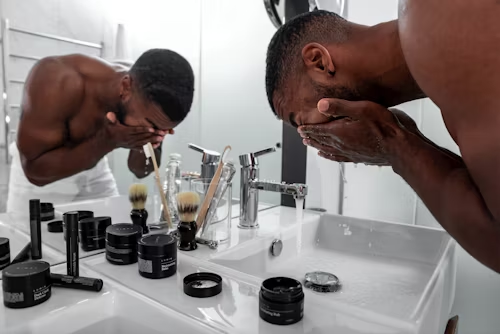
Be gentle with your application.
When applying makeup over acne, the concern is avoiding a heavy, cakey appearance that accentuates breakouts. Matin Maulawizada, a celebrity makeup artist based in New York City and Clinique Colour Pro, emphasizes the importance of concealer technique. “True coverage doesn’t come from the foundation,” he explains. It comes from your concealer.”
To begin, apply a sheer layer of foundation evenly across your face to reduce redness and even your skin tone. Then, Matin suggests using a small brush to apply minimal concealer onto the back of your hand, ensuring even pigment distribution on the bristles to prevent clumping on the skin. “He suggests starting from the outer edges of the pimple and blending towards the centre for complete coverage,” he advises. “Afterward, lightly tap on additional concealer with your ring finger for added coverage.” Alternate between blending with the brush and tapping with your fingertips, repeating two to three times until you achieve seamless coverage that blends into your skin.”
For active acne or highly red pimples, consider using a treatment concealer like Acne Solutions Clearing Concealer, which contains salicylic acid and acetylglucosamine to exfoliate dead skin cells that clog pores.
Despite the temptation, do not skip setting powder. A light powder application helps keep concealer in place throughout the day.
Make it a habit to cleanse your skin—twice thoroughly.
Although removing makeup after a long day or night might seem daunting, it’s one of the simplest and most effective ways to expedite acne clearance. However, it’s essential to understand that cleansing your face and removing makeup are distinct steps that cannot be combined.
According to Dr Orentreich, achieving optimal results during the cleansing process requires using a makeup remover specifically designed to dissolve makeup easily, as regular soaps may not effectively remove all traces of makeup. This approach ensures that makeup is thoroughly removed and minimizes the need for vigorous scrubbing, which can result in skin irritation and worsen acne. A top recommendation from makeup artists is Take The Day Off Cleansing Milk, renowned for its gentle yet effective formula that effectively removes makeup while hydrating the skin. Incorporating this meticulous cleansing routine into your skin care regimen will help maintain a clear complexion and promote overall skin health and vitality.

Can I use makeup if I have acne-prone skin?
Individuals with acne-prone skin may find that certain makeup products, such as concealers and foundations, can exacerbate acne and breakouts. However, opting for non-comedogenic products can help mitigate this issue, as they are specifically formulated not to clog pores, reducing the risk of aggravating acne.
Is primer beneficial for acne-prone skin?
When selecting a primer for acne-prone skin, it is advisable to choose a non-comedogenic option. These primers are designed to minimize the risk of pore blockages, which can lead to acne breakouts. Additionally, non-comedogenic primers can help extend the longevity of your makeup, providing a smoother and more even application.
Which type of makeup is preferable for acne-prone skin, powder or liquid?
Pair makeup is generally recommended over liquid formulations for individuals with acne-prone skin. Powder makeup products contain larger pigment particles, reducing the likelihood of pore blockage and acne aggravation. By choosing powder makeup, individuals can achieve the desired coverage without compromising the health of their skin.
Conclusion:
Mastering the art of makeup application for acne-prone skin involves incorporating critical practices and correct techniques into your routine. Start by prioritizing primer as a base to smooth out pores and prolong makeup wear. Opt for lightweight, oil-free foundations to avoid exacerbating acne, and ensure your tools are clean to prevent bacterial buildup. Utilize colour correctors to neutralize redness and scars effectively, and always remember to thoroughly remove makeup at the end of the day to maintain skin health. By following these essential tips, individuals with acne-prone skin can achieve a flawless makeup look while keeping breakouts at bay.



